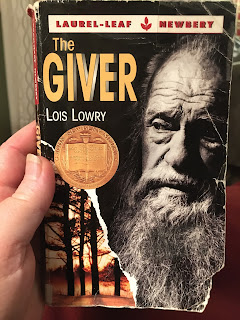This book, written by Joseph Krumgold, is one of the older Newbery Award books. It was written several years before I was born, but would have easily been present in my school or hometown library. Indeed, it is an old library discard, because the old usually has to make way for the new. I try to imagine myself reading it, possibly in the 4th grade, and wonder how well I would have enjoyed it. And did I enjoy it now, almost 70 years after it was written? Kinda, sorta.
Miguel is an 11 year-old boy in a large family of sheep ranchers in New Mexico. He is not the youngest child, and not the oldest one, but in the middle, and he is trying to find his place and his role in the work and in the family. He is not a little boy any more and yearns to be regarded as a valuable worker along with the men and his big brother, Gabriel. Miguel’s biggest goal, his dream is to be allowed to go with the other men to take the sheep up into the Sangre de Cristo mountains for the summer.
This book is like a mini-documentary, following the work of raising sheep, seen from a boy’s perspective. From spring lambing time, shearing, finding a lost herd, Miguel describes everything he does and sees, and how he tries to prove his worth. But he is disappointed when his dad says, “No.” He is still too young. Desperate, he prays to the patron saint of his town, San Ysidro to find a way to let him go with the sheep and the men of his family to the summer grazing fields.
When Miguel’s father calls to him and says that the boy will go with them after all, he is ecstatic and proud—until he finds out how his prayer was answered. His brother Gabriel has gotten a letter from the draft board calling him up, and now, in spite of his youth, Miguel will be needed with the sheep. Miguel is close to and looks up to his big brother, and feeling guilty, he prays to take back his request, but San Ysidro does not answer this prayer.
Miguel and Gabriel have a deep discussion about the role of the saints and prayers, and why things work the way they do. Even though their conversation is emotionally taxing, Gabriel says that he is glad that they could have the talk. The reader could feel a deeper connection between the two of them after that. Almost like an epilog, the journey up to the grazing grounds is told, and they arrive safely.
The author spent time with the real Miguel, and the book recounts his real life story. It is told in the first person, and the manner of speech must be similar to what Krumgold picked up from him. If Krumgold’s name is slightly familiar, that is because he is the one who wrote another Newbery Award book Onion John (which I have previously reviewed on this blog).
I can see why this book was a contender for the prize, but I can also see that it is not the subject and style of what youth today would be interested in reading. I found it in a Little Free Library at Turtle Bay Park.








